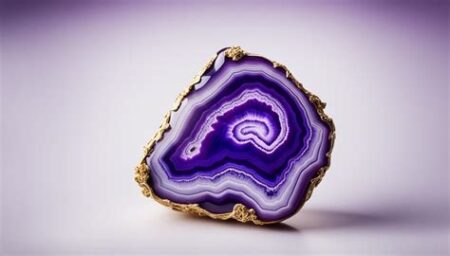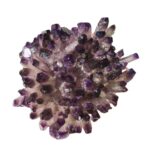Introduction
Calcite, a ubiquitous mineral composed of calcium carbonate (CaCO3), plays a crucial role in geological processes and has found widespread applications in various industries. Its unique optical, chemical, and physical properties make it a valuable material for a diverse range of purposes. This article provides an in-depth look at calcite’s characteristics, exploring its composition, structure, formation, and applications.

Composition and Structure
Calcite is a carbonate mineral with a chemical formula of CaCO3. Its crystal structure is trigonal, characterized by a rhombohedral shape. The calcium ions (Ca2+) are coordinated by six oxygen ions (O2-), forming a trigonal planar arrangement. Each oxygen ion is shared by two calcium ions, resulting in a strong covalent bond between the atoms. This crystalline structure contributes to calcite’s hardness and stability.
Figure 1: Crystal Structure of Calcite

Formation and Distribution
Calcite forms through various geological processes, including:
- Precipitation from seawater or groundwater
- Metamorphism of other carbonate rocks
- Hydrothermal alteration of calcium-rich minerals
Calcite is a widespread mineral found in sedimentary, metamorphic, and igneous rocks. It is also present in biological systems, such as the skeletons of marine organisms and the otoliths (ear bones) of fish.
Figure 2: Global Distribution of Calcite Deposits

Physical Properties
Calcite exhibits several distinctive physical properties:
- Hardness: 3 on the Mohs scale
- Specific gravity: 2.71 g/cm³
- Color: Colorless or white, but can be tinted by impurities
- Transparency: Translucent to transparent
- Cleavage: Three perfect cleavages parallel to the rhombohedral faces
- Fluorescence: Emits orange-red fluorescence under ultraviolet light
Optical Properties
Calcite possesses remarkable optical properties:
- Refractive index: 1.486-1.658
- Double refraction: Calcite exhibits strong double refraction, meaning it splits light rays into two paths
- Birefringence: The difference in refractive indices between the two paths is 0.172
Calcite’s double refraction has led to its use in various optical instruments, such as polarizing filters and prisms.
Chemical Properties
Calcite is a chemically reactive mineral that readily reacts with acids:
- Solubility: Soluble in dilute acids, such as hydrochloric acid (HCl)
- Effervescence: Calcite reacts with acids to produce bubbles of carbon dioxide (CO2)
- Weathering: Calcite can dissolve in water, leading to the formation of caves and other karst features
Applications
Calcite finds applications in numerous fields, including:
- Construction materials: Limestone, marble, and other calcite-rich rocks are used as building materials
- Fillers and extenders: Calcite is used as a filler in paints, paper, plastics, and rubber
- Fertilizers: Calcite is an important source of calcium for agricultural soils
- Optical instruments: Calcite’s double refraction is utilized in polarizing filters, prisms, and other optical devices
- Pharmaceuticals: Calcite is used as an antacid and as a calcium supplement
Innovations and New Applications
Ongoing research is uncovering novel applications for calcite:
- Artificial bone materials: The biocompatibility and porous nature of calcite make it a promising material for bone replacement implants
- Carbon capture and storage: Calcite can act as a carbon sink, capturing and storing atmospheric carbon dioxide
Tips and Tricks
- To easily identify calcite, look for its characteristic rhombohedral cleavage and effervescence when reacted with acids.
- Store calcite away from acidic environments to prevent weathering and dissolution.
- Use calcite’s optical properties to create stunning effects in photography and other visual arts.
Step-by-Step Approach to Calcite Identification
- Examine the mineral’s cleavage and habit. Calcite typically exhibits perfect rhombohedral cleavage.
- Test its reaction to acids. Calcite will effervesce when exposed to dilute acids.
- Observe its optical properties using a polarizing microscope. Calcite exhibits strong double refraction and birefringence.
FAQs
- What is the difference between calcite and other carbonate minerals? Calcite is a specific carbonate mineral with a trigonal crystal structure and a chemical formula of CaCO3. Other carbonate minerals, such as aragonite and dolomite, have different crystal structures and chemical compositions.
- Is calcite fluorescent? Yes, calcite emits an orange-red fluorescence under ultraviolet light.
- Is calcite toxic? No, calcite is not toxic and is commonly used in various applications, including pharmaceuticals and food additives.
- How do I clean calcite? Calcite can be cleaned using a mild soap and water solution. Avoid using harsh chemicals or abrasive cleaners.
- Where can I find calcite? Calcite is a widespread mineral found in various geological formations, including sedimentary, metamorphic, and igneous rocks.
- What are some of the potential risks associated with calcite extraction? Calcite extraction can lead to environmental impacts, such as dust pollution and habitat destruction. Sustainable mining practices are essential to mitigate these risks.
Conclusion
Calcite is a versatile and fascinating mineral with a wide range of properties and applications. Its unique optical, chemical, and physical characteristics have made it a valuable material in industries as diverse as construction, medicine, and the arts. Ongoing research is uncovering new and innovative uses for calcite, further expanding its importance in modern society.




























